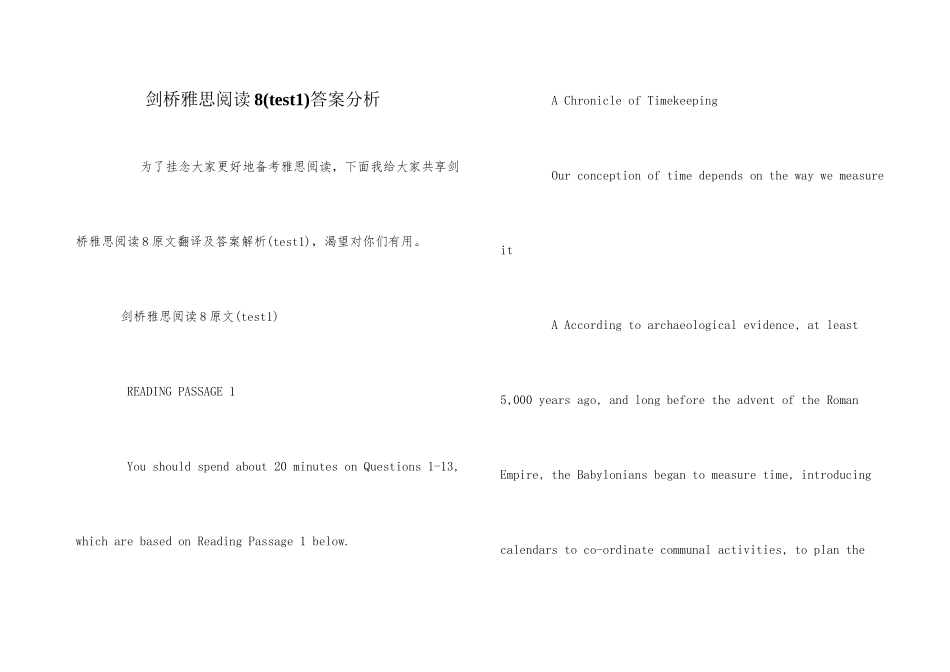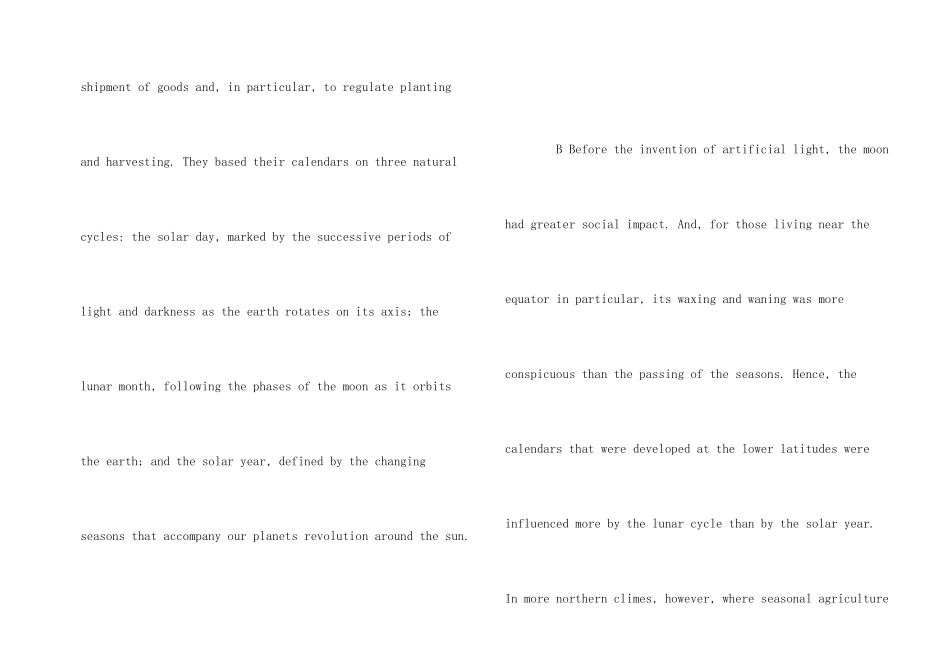剑桥雅思阅读 8(test1)答案分析 为了挂念大家更好地备考雅思阅读,下面我给大家共享剑桥雅思阅读 8 原文翻译及答案解析(test1),渴望对你们有用。 剑桥雅思阅读 8 原文(test1) READING PASSAGE 1 You should spend about 20 minutes on Questions 1-13, which are based on Reading Passage 1 below. A Chronicle of Timekeeping Our conception of time depends on the way we measure it A According to archaeological evidence, at least 5,000 years ago, and long before the advent of the Roman Empire, the Babylonians began to measure time, introducing calendars to co-ordinate communal activities, to plan the shipment of goods and, in particular, to regulate planting and harvesting. They based their calendars on three natural cycles: the solar day, marked by the successive periods of light and darkness as the earth rotates on its axis; the lunar month, following the phases of the moon as it orbits the earth; and the solar year, defined by the changing seasons that accompany our planets revolution around the sun. B Before the invention of artificial light, the moon had greater social impact. And, for those living near the equator in particular, its waxing and waning was more conspicuous than the passing of the seasons. Hence, the calendars that were developed at the lower latitudes were influenced more by the lunar cycle than by the solar year. In more northern climes, however, where seasonal agriculture was practised, the solar year became more crucial. As the Roman Empire expanded northward, it organised its activity chart for the most part around the solar year. C Centuries before the Roman Empire, the Egyptians had formulated a municipal calendar having 12 months of 30 days, with five days added to approximate the solar year. Each...


